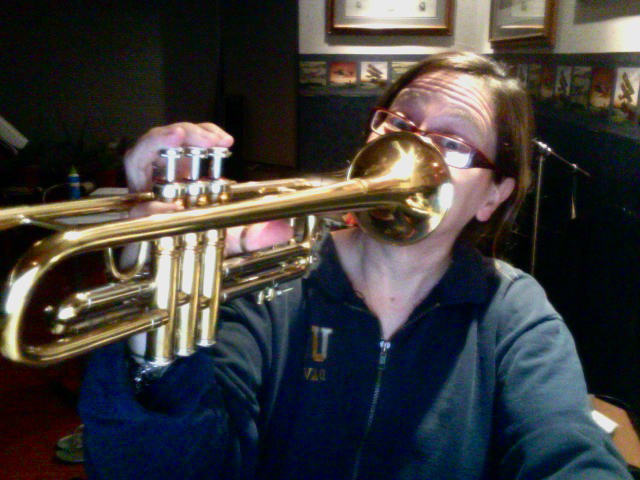Take your main instrument. Play a scale, passage or etude with proper technique and solid tone. Spend a minute or two getting warmed up to the way you were taught that that instrument should sound and be played.
 Now stop. For the next ten minutes I want you to figure out at least 50 different interesting sounds you can coax from your instrument that are NOT the conventional way of playing. That's right. Look at your instrument like you have never seen it before. Perhaps you can think of yourself as a native of a culture that has never seen your instrument but was told that it makes music. How would they explore it in those first 10 minutes to create interesting sounds.
Now stop. For the next ten minutes I want you to figure out at least 50 different interesting sounds you can coax from your instrument that are NOT the conventional way of playing. That's right. Look at your instrument like you have never seen it before. Perhaps you can think of yourself as a native of a culture that has never seen your instrument but was told that it makes music. How would they explore it in those first 10 minutes to create interesting sounds.I don't want to give you too many ideas. (OK a few seeds I can plant. If you play a wind instrument think percussion. If you play percussion think strings. If you play strings, think vocal technique. If you sing, think all of the above! Also, you may feel free to use other non-musical objects with your instrument. But don't limit it to just these ideas either. Explore!)
My advice: don't be afraid to be silly and take some risks. No one is watching!
Go! 10 minutes!

OK. Pick 10-15 of the sounds you found the most interesting. Practice them and make sure you have the technique to produce them with ease.
Now get out a piece of paper. Develop a notation system for your new found sounds. You can use a staff or variation of one. You can use notes, but don't limit it to that. Consider graphical notation, pictures, glyphs, words or colors. The notation system should reflect the sounds but also be easy to decipher.
Now compose. Take those 10-15 sounds and write a piece. But don't write it out first. Go ahead and play with those sounds. When you create a brief section that you find interesting figure out how to notate it. Write it out and then play it while reading it. Repeat for the next sections.
All musical elements should be in play here: form, timbre, melody, rhythm and harmony. It is just the convention of the instrument that has been destroyed.
Create a 2-3 minute piece and score. Practice it until you can solidly perform it. This would be fun to do with some friends or colleagues as well. Have them do the same challenge and then share your works.
What's the point? Isn't your practice time more valuable then this? Maybe. Just try it and make observations about the process. I think you will find this exercise to be revelatory.
I will post my results in a few weeks as well as those of any of the reader(s) of my blog who are willing to share their experiment. E-mail the score and an audio or video file to erikschlosser@gmail.com.

No comments:
Post a Comment